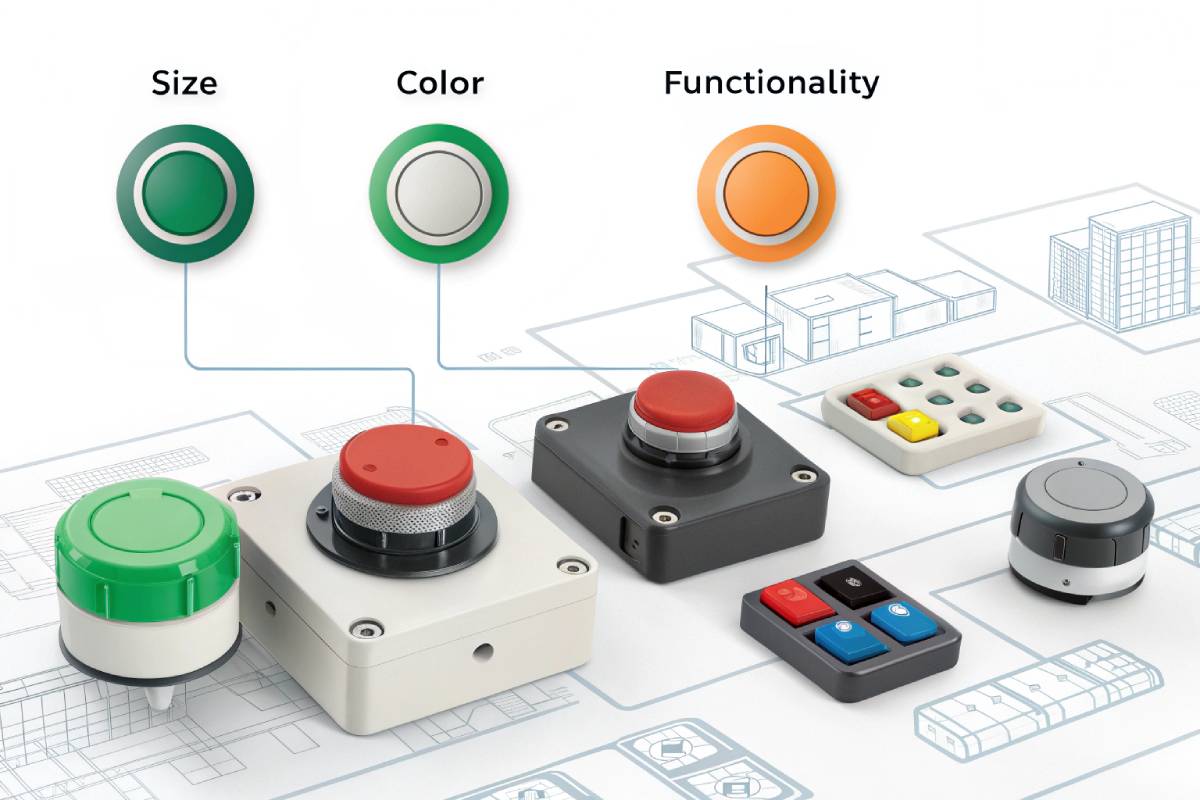Push buttons play a crucial role in industrial and commercial applications, serving as fundamental components in control panels, machinery, and electrical systems. Selecting the right push button is essential for ensuring operational efficiency, safety, and longevity of electrical equipment.
With a range of designs, functionalities, and configurations available, understanding key selection criteria is vital. This blog explores the important factors to consider when choosing push buttons for specific applications.
Understanding the Application Requirements
Before selecting a push button, it is important to evaluate the requirements of the application. Different environments and operational conditions dictate the type of push button best suited for the task.
- Operating Environment: Identify whether the push button will be used in industrial, commercial, or hazardous conditions. Some applications require push buttons with high resistance to moisture, dust, or extreme temperatures.
- Electrical Ratings: Verify that the push button aligns with the voltage and current specifications of the electrical equipment it is intended to control.
- Functionality: Determine whether the push button should be momentary (active only while pressed) or maintained (stays activated until pressed again).
- Integration with Control Systems: Verify whether the push button needs to be incorporated into automated systems or programmable logic controllers (PLCs).
Selecting the Right Type of Push Button
Push buttons are available in various types, each serving distinct functions within an electrical system. Choosing the appropriate type ensures efficient deployment and reliable performance.
- Standard Push Buttons: Used for basic start-stop operations in control panels and industrial machinery.
- Illuminated Push Buttons: These are equipped with built-in lighting for better visibility in low-light environments and are commonly employed in monitoring stations.
- Mushroom Head Push Buttons: Designed for emergency stop functions, these push buttons provide easy access and rapid response.
- Selector Switch Push Buttons: Offer multiple operational positions and are often incorporated into systems requiring mode selection.
- Capacitive Touch Push Buttons: These are used in modern electrical devices where minimal mechanical wear and high sensitivity are required.
Evaluating Build Quality and Durability
The longevity and reliability of a push button depend on the materials used in its construction and its ability to withstand environmental stressors.
- Material Composition: Push buttons made from high-grade plastics, stainless steel, or aluminium are ideal for different operational conditions.
- Ingress Protection (IP) Ratings: Ensure the push button has an appropriate IP rating, especially for outdoor or harsh industrial environments.
- Mechanical Life Cycle: Consider the number of operations a push button can endure before failure, which directly impacts its reliability.
- Resistance to External Factors: Factors such as moisture, chemicals, vibration, and dust should be accounted for when selecting a push button for heavy-duty applications.
Compliance with Safety and Regulatory Standards
To maintain operational safety and efficiency, it is essential to select push buttons that comply with industry standards and certifications.
- ISO and IEC Standards: Ensure that the push button meets international safety and quality standards for electrical instruments and devices.
- Emergency Stop Compliance: When used for emergency functions, push buttons must adhere to safety regulations to guarantee immediate response and fail-safe operation.
- Certification for Explosive Environments: In hazardous locations, push buttons should be ATEX or UL-certified to prevent ignition risks.
Benefits of Partnering with Reputable Energy Brands
Selecting high-quality push buttons is only part of the process. Collaborating with a trusted electrical brand ensures superior product reliability, technical expertise, and long-term support. Reputed brands manufacture push buttons that comply with stringent industry standards, ensuring safety, durability, and seamless integration with electrical instruments and control systems.
Industry-leading companies employ cutting-edge technology to develop push buttons that enhance efficiency and functionality in electrical systems. They offer a comprehensive product range, catering to diverse operational needs across various industries. With high-quality materials and strong designs, these push buttons withstand harsh environments and extended usage.
Partnering with a reputable supplier provides access to expert consultation, troubleshooting, and ongoing maintenance assistance. By choosing push buttons from a trusted energy brand, businesses can enhance operational efficiency, reduce equipment failures, and maintain high safety standards.




















